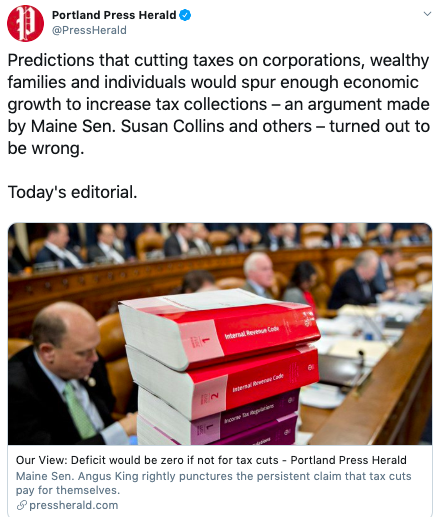Canada's Conservatives: Tax Cuts And Deficit Reduction Plan

Table of Contents
Core Tenets of the Conservative Tax Cut Plan
The Conservative tax plan generally centers on targeted tax relief and simplification of the Canadian tax system, aiming to stimulate economic growth and improve the lives of Canadian families and businesses. The core principles emphasize reducing the tax burden on individuals and corporations, encouraging investment and job creation.
- Specific examples of proposed tax cuts: Specific proposals vary depending on the election cycle and platform. However, past Conservative platforms have included reductions in personal income tax rates, particularly for middle- and lower-income earners, and cuts to the corporate tax rate to encourage business investment and competitiveness.
- Changes to tax brackets or deductions: The party may propose adjustments to tax brackets to provide more relief to specific income groups, and potentially revise or expand certain tax deductions to incentivize specific activities, such as charitable giving or home renovations.
- Target demographic(s): While the exact details change, the Conservative tax plan typically targets a broad range of Canadians, often focusing on middle-income families, small businesses, and those investing in their education or retirement.
- Tax credits or incentives: The plan may include enhancements to existing tax credits (e.g., child tax benefit) or the introduction of new tax credits for specific purposes. These could include credits for childcare, education, or green initiatives.
Projected Economic Impacts of Tax Cuts
The Conservatives project several positive economic impacts from their tax cuts. However, critics raise concerns about potential downsides.
- Projected GDP growth: The party typically projects increased GDP growth as a result of increased consumer spending and business investment fueled by the tax cuts. This increased spending would drive economic activity, creating a ripple effect throughout the economy.
- Impact on employment rates: The Conservatives often argue that tax cuts lead to increased job creation, as businesses expand and invest due to lower tax burdens. However, the magnitude of this effect is debated.
- Inflationary pressures: Critics argue that significant tax cuts could lead to inflationary pressures if the increased demand outpaces the economy's ability to supply goods and services. This is especially relevant if the tax cuts are implemented without corresponding spending cuts.
- Effects on different sectors: The impact of the tax cuts will likely vary across different sectors of the economy. Some sectors may experience greater growth than others, depending on their sensitivity to changes in consumer spending and investment.
The Conservative Plan for Deficit Reduction
The Conservative party’s plan to reduce the national deficit while simultaneously implementing tax cuts typically involves a combination of spending cuts and projected revenue increases from economic growth.
- Proposed spending cuts: This usually involves identifying areas of government spending considered inefficient or ineffective. Potential targets include streamlining government bureaucracy, reducing the size of the public service, and potentially cutting funding for specific programs. The specific programs targeted often vary based on political priorities and the current economic climate.
- Revenues from economic growth: The Conservatives argue that the economic growth stimulated by tax cuts will lead to higher tax revenues, offsetting some of the costs associated with the tax reductions. This is a key element of their argument for the fiscal responsibility of the plan.
- Changes to government spending priorities: A Conservative government would likely prioritize certain areas of spending over others, reflecting shifts in policy priorities.
- Feasibility of deficit reduction: The feasibility of their proposed deficit reduction measures is a frequent point of contention, with critics often questioning the ability of the projected economic growth to offset the costs of the tax cuts and spending reductions.
Addressing Concerns about the Plan's Fiscal Sustainability
The long-term fiscal sustainability of the Conservative tax plan is a major area of debate. Critics raise concerns about potential increases in the national debt.
- Independent economic analyses: Various independent economic think tanks and organizations regularly provide analyses of the Conservatives’ fiscal proposals, often highlighting potential risks and challenges. These analyses offer important perspectives beyond the party's own projections.
- Concerns regarding national debt: The increased debt is a major concern, as it can impact the country’s credit rating and future economic opportunities.
- Conservative responses to criticisms: The Conservatives usually defend their plan by emphasizing the projected long-term economic benefits, arguing that increased economic growth will outweigh the short-term costs associated with the tax cuts. They often cite examples of similar policies in other countries.
Comparison to Other Parties' Economic Platforms
The Conservative tax plan differs significantly from the approaches taken by other major Canadian political parties. While specifics change across elections, key differences generally persist.
- Tax and deficit reduction approaches: Other parties may favor different approaches to taxation, prioritizing different types of taxes or focusing on targeted tax increases rather than cuts. Similarly, their strategies for deficit reduction might differ substantially, potentially emphasizing increased government efficiency, altered spending priorities, or different economic growth strategies.
- Points of convergence and divergence: There might be some common ground on certain aspects of economic policy (e.g., the importance of infrastructure investment), but significant differences often emerge in the proposed mechanisms and priorities for achieving economic goals.
- Economic viability: Economic analysts regularly compare and contrast the various economic platforms, attempting to assess which plan is most likely to achieve its stated goals while maintaining fiscal stability in the long term.
Conclusion
Understanding Canada's Conservative tax plan requires careful consideration of its proposed tax cuts and deficit reduction strategies. The potential benefits, such as increased economic growth and job creation, need to be weighed against the potential risks, including inflationary pressures and concerns about long-term fiscal sustainability. A thorough analysis of the plan's long-term fiscal impact and a comparison with other parties' platforms are crucial for informed decision-making. Understanding the intricacies of Canada's Conservative tax plan is crucial for informed voting. Further research into the details of the Canada's Conservative tax plan will help you make an educated decision during the next election.

Featured Posts
-
 John Travolta Reassures Fans Following Controversial Bedroom Photo
Apr 24, 2025
John Travolta Reassures Fans Following Controversial Bedroom Photo
Apr 24, 2025 -
 Elite Universities And The Trump Administration Funding Battles And Fundraising Strategies
Apr 24, 2025
Elite Universities And The Trump Administration Funding Battles And Fundraising Strategies
Apr 24, 2025 -
 Crook Made Millions By Hacking Executive Office365 Inboxes Fbi Investigation
Apr 24, 2025
Crook Made Millions By Hacking Executive Office365 Inboxes Fbi Investigation
Apr 24, 2025 -
 Transgender Sports Ban Minnesota Attorney General Files Lawsuit Against Trump
Apr 24, 2025
Transgender Sports Ban Minnesota Attorney General Files Lawsuit Against Trump
Apr 24, 2025 -
 Blue Origin Scraps Rocket Launch Due To Subsystem Issue
Apr 24, 2025
Blue Origin Scraps Rocket Launch Due To Subsystem Issue
Apr 24, 2025
